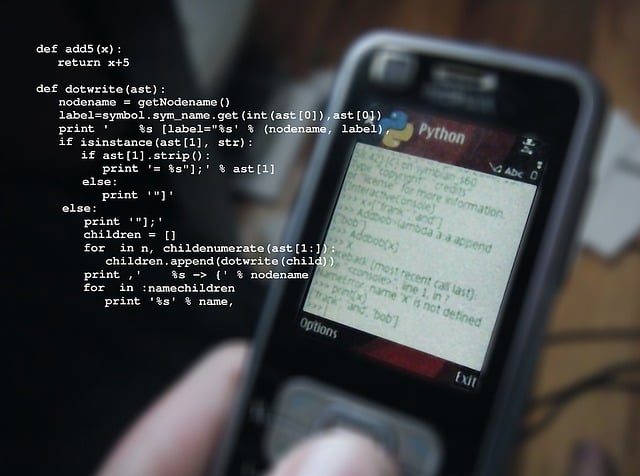With the surge in popularity of online trading, many people are looking to create their own trading apps to have more control over their investments and to implement custom strategies. Building your own trading app might seem daunting, but it can be a rewarding endeavour with the right resources and guidance. In this article, we will explore the best programming languages for creating a trading app, the process of building an app, and the benefits and drawbacks of creating your own trading software.
-
Choosing the Best Programming Language
-
Python
Python is a versatile and widely-used programming language that is known for its simplicity and readability. With its extensive libraries and frameworks, Python has become popular for developing trading apps, particularly for algorithmic and quantitative trading. Some popular libraries include NumPy, pandas, TA-Lib for financial data manipulation, and back trader or zipline for backtesting strategies.
-
JavaScript
JavaScript, especially with Node.js, is another popular choice for developing trading apps. It is widely used for creating web applications, and its asynchronous nature makes it well-suited for handling real-time data streams. Several libraries and frameworks are available, such as socket.io for real-time communication and ccxt for accessing multiple cryptocurrency exchanges.
-
Other languages
While Python and JavaScript are popular choices, other programming languages such as Java, C++, and C# can also be used for creating trading apps. These languages have strong performance and extensive libraries, but they might have a steeper learning curve than Python and JavaScript.
-
Building Your Trading App
-
Define Your Goals and Requirements
Before you start building your trading app, you must define your goals and requirements. Consider factors such as the assets you want to trade, the types of orders you’ll be executing, and any specific strategies or algorithms you wish to implement. This will help you determine which programming language, libraries, and APIs to use.
-
Learn the Necessary Skills
To build your trading app, you’ll need to have a solid understanding of programming concepts and the chosen programming language. If you’re not familiar with the language, numerous online resources, courses, and tutorials are available to help you learn.
-
Choose a Broker and API
Selecting a broker with API access is crucial for building your trading app. The API (Application Programming Interface) allows your app to communicate with the broker’s platform to execute trades, access market data, and manage your account. Some popular brokers with API access include Interactive Brokers, Alpaca, and TD Ameritrade. Ensure the broker’s API supports the assets and order types you require, and familiarize yourself with their documentation.
-
Develop Your Trading Strategy
Whether you’re building a simple app for placing manual trades or creating a sophisticated algorithmic trading system, developing a clear and effective trading strategy is essential. This can involve technical analysis, fundamental analysis, or even machine learning techniques. Consider backtesting your strategy using historical data to ensure its efficacy and to make any necessary adjustments.
-
Implement and Test Your App
Once you’ve selected your programming language, broker, and API, it’s time to start building your app. Implement proper error handling and security measures to protect your account and funds. Test your app thoroughly using a demo or paper trading account to identify and resolve any issues before deploying it in a live trading environment.
-
Benefits of Building Your Own Trading App
-
Customization
One of the primary benefits of building your own trading app is the ability to customize it to your exact needs and preferences. You can implement specific strategies, order types, and risk management measures that might not be available in off-the-shelf trading platforms.
-
Control and Flexibility
Complete control over your trading app allows you to make changes and improvements as needed, ensuring that it remains aligned with your goals and the ever-evolving market conditions. This flexibility can give you a competitive edge in the trading world.
-
Cost Savings
While there might be an initial investment in time and resources when building your own trading app, it can save you money in the long run. Many commercial trading platforms charge subscription fees, while self-built apps have no ongoing costs.
-
Drawbacks of Building Your Own Trading App
-
Time and Effort
Creating a trading app requires significant time and effort, particularly if you’re new to programming or the chosen language. Learning the necessary skills, developing the app, and troubleshooting issues can be time-consuming, which might not be ideal for those with limited availability.
-
Maintenance
Building your own trading app also involves ongoing maintenance, such as updating libraries, fixing bugs, and adapting to changes in the broker’s API or market conditions. This can be a considerable commitment, and failure to maintain your app could lead to performance issues or even financial losses.
-
Limited Support
When using a commercial trading platform, you can typically rely on customer support for help with any issues. However, when building your own app, you’ll be responsible for troubleshooting and resolving problems, which might be challenging if you’re not an experienced developer.
-
Security Risks
Developing a secure trading app is crucial to protect your account and funds. If you lack the expertise to implement proper security measures, your app could be vulnerable to hacks or unauthorized access.
-
Conclusion
Creating your own trading app can offer numerous benefits, including customization, control, and cost savings. However, it also involves a significant investment of time and effort, ongoing maintenance and potential security risks. Building a trading app can be rewarding and potentially profitable if you’re willing to take on these challenges. You can develop an app that aligns with your unique goals and requirements by carefully selecting the correct programming language, broker, API, and trading strategy.



































